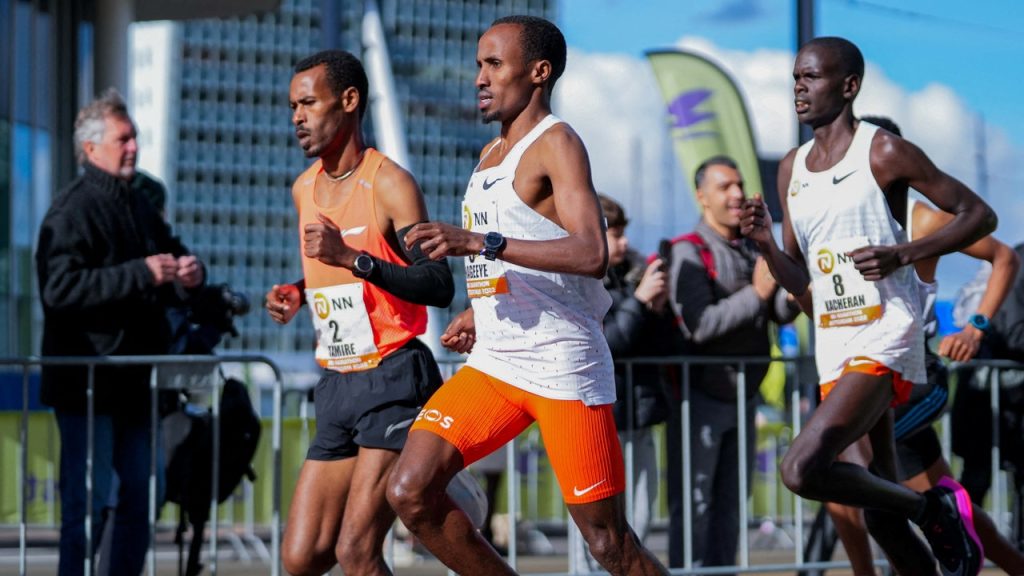Continuous glucose monitors (CGMs) are small adhesive skin patches that utilize Bluetooth technology to link to a smartphone and provide real-time tracking of blood glucose levels. These devices, initially developed for individuals with diabetes, are now being utilized by some athletes, including Dutch marathon runner Abdi Nageeye, to optimize their athletic performance. Despite the promising potential of CGMs, there is a lack of validated scientific research on how to effectively enhance an athlete’s training regimen using this technology. The companies leading in this field, such as Abbott and Dexcom, are exploring opportunities in the sports and wellness industries.
The CGM market is already valued at billions of dollars, driven by consumer demand from diabetes patients seeking an alternative to traditional blood testing methods. Dexcom’s recent product, the Stelo device, has received approval for purchase without a prescription, targeting individuals with early-stage diabetes who are not on insulin. Abbott has also introduced a CGM product for sports users without diabetes, with top athletes like Kenyan marathoner Eliud Kipchoge utilizing these devices for optimizing calorie intake and workout intensity. The market for lifestyle CGMs is projected to grow significantly over the next decade, driven by users seeking additional support in health and wellness efforts.
Olympians like Dutch marathoner Abdi Nageeye and Australian swimmer Chelsea Hodges have integrated CGMs into their training and competition preparations, using the devices to monitor blood glucose levels as an indicator of energy availability. Nageeye has focused on refining his sleep and eating patterns to maximize his available energy during training sessions, aiming for a more efficient running experience. For Hodges, CGMs have been crucial in addressing fatigue and dizziness during high-intensity workouts, leading to adjustments in her diet and training schedules. Despite the potential for using CGMs in optimizing athletic performance, researchers emphasize the need for further studies to fully understand how to leverage this technology for training routines.
Sports nutrition scientists see CGMs as a promising avenue for enhancing training protocols for endurance athletes, providing valuable insights into the effectiveness of workout regimens. Associate Professor Filip Larsen highlights the ability of CGMs to offer a better understanding of training intensity and recovery needs, allowing athletes to fine-tune their approaches for optimal performance. While ongoing trials and experiments are exploring the potential benefits of CGMs in various sports settings, there is a consensus among experts that more research is needed to establish best practices for integrating this technology into training programs. Trials examining caloric intake and exercise intensity have yielded inconclusive results, underscoring the importance of continued investigation.
Amid the growing popularity of CGMs for athletes and non-diabetic consumers seeking health and fitness support, concerns remain about the need for professional guidance in utilizing this technology effectively. Sports dietician Greg Cox emphasizes the importance of conducting further research to better understand the impact of caloric intake on glucose levels in endurance athletes. Both Cox and Larsen caution against the widespread use of CGMs without professional supervision, as misinterpretation of glucose data could lead to unnecessary concerns among users. Market leader Abbott underscores the importance of managing blood-glucose fluctuations for improved metabolism and overall well-being, stressing the benefits of maintaining steady glucose levels for enhanced energy, focus, and sleep quality. As the field of CGM technology continues to evolve, a collaborative effort among researchers, athletes, and industry partners will be essential to unlocking the full potential of this innovative tool in enhancing athletic performance and promoting overall health.


